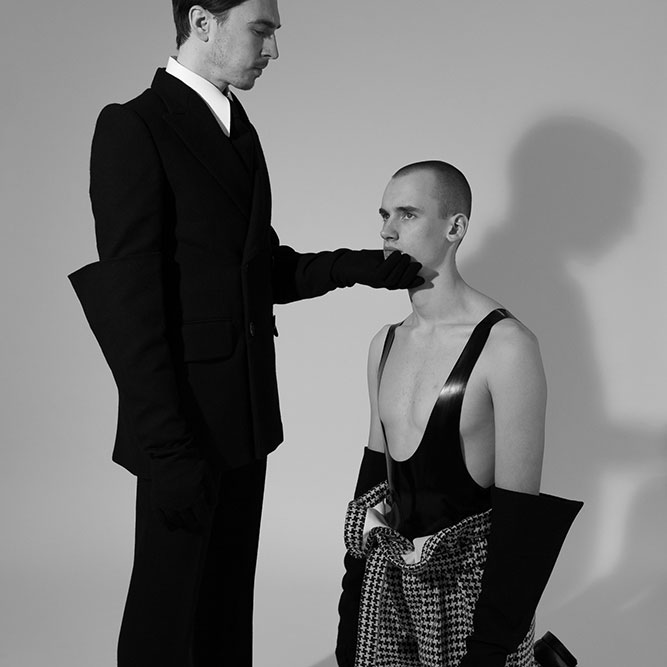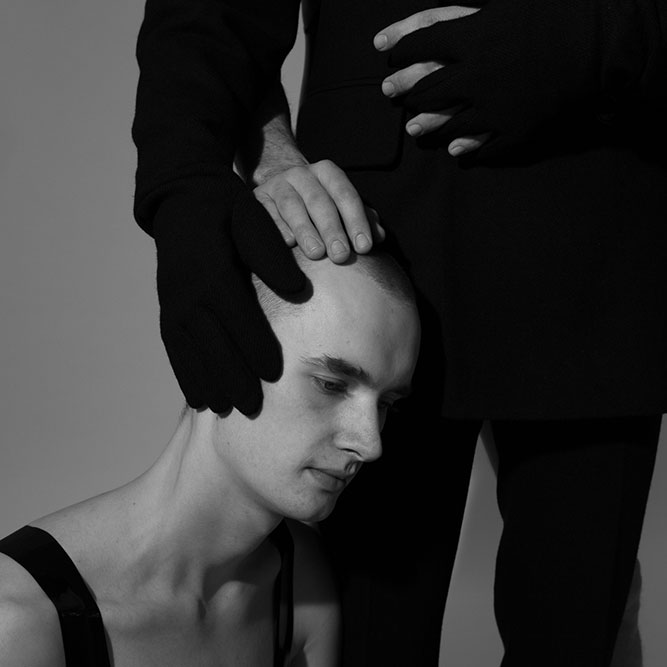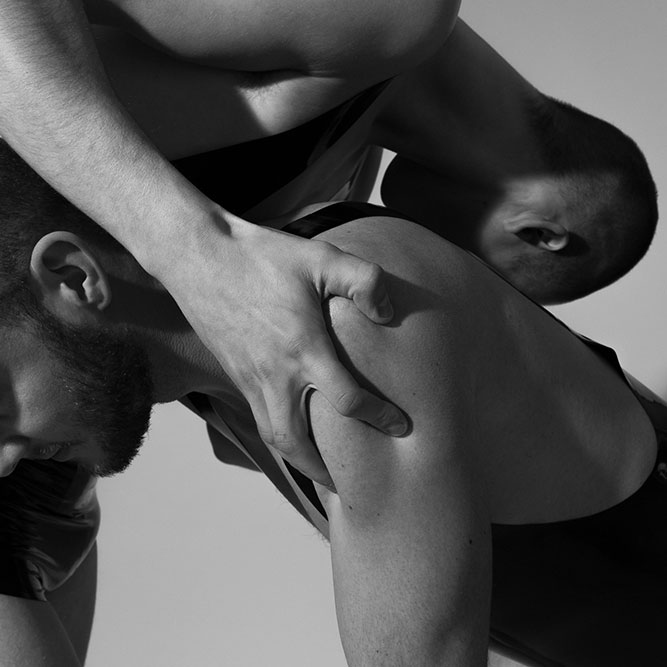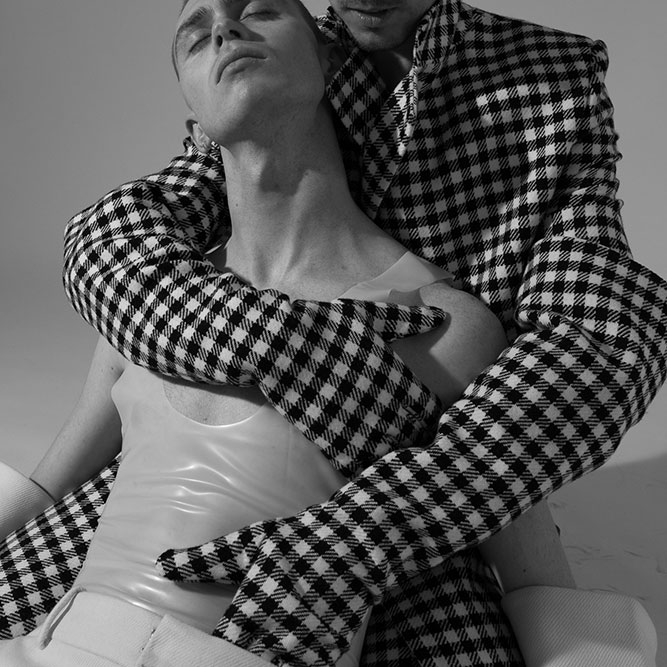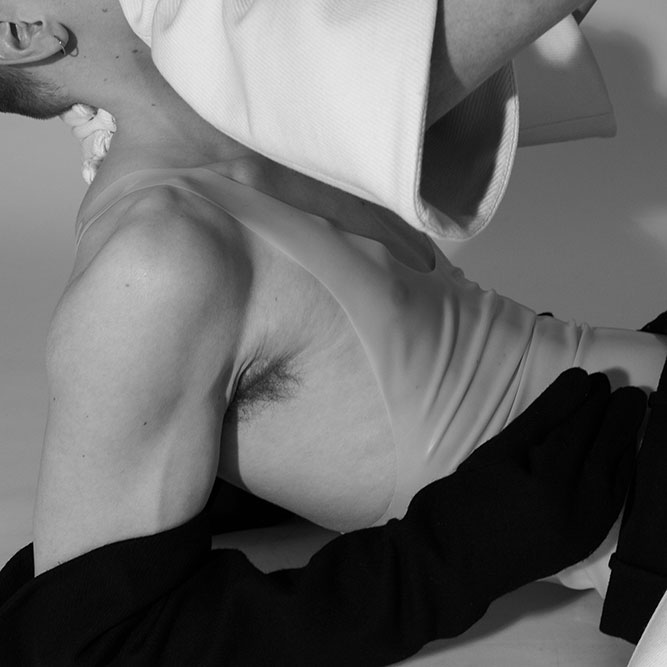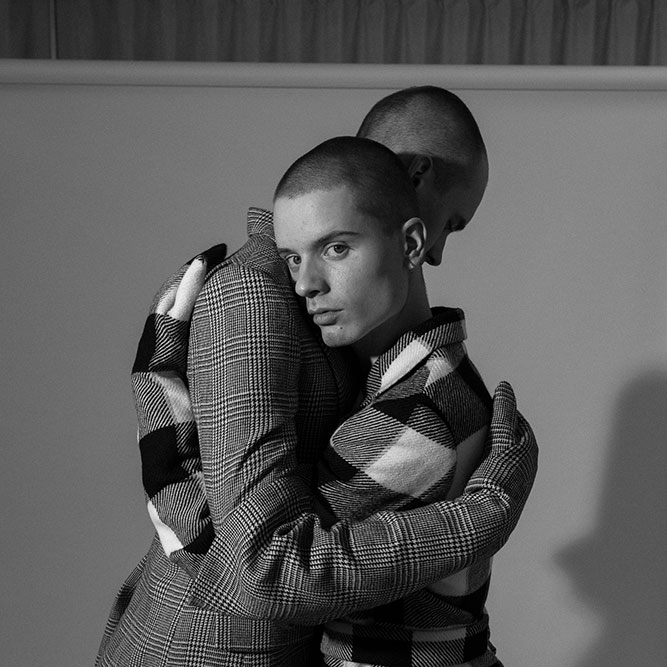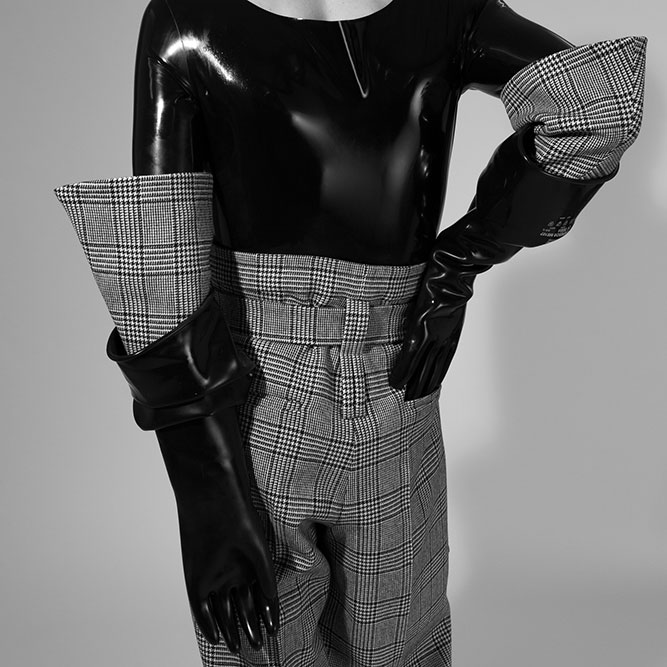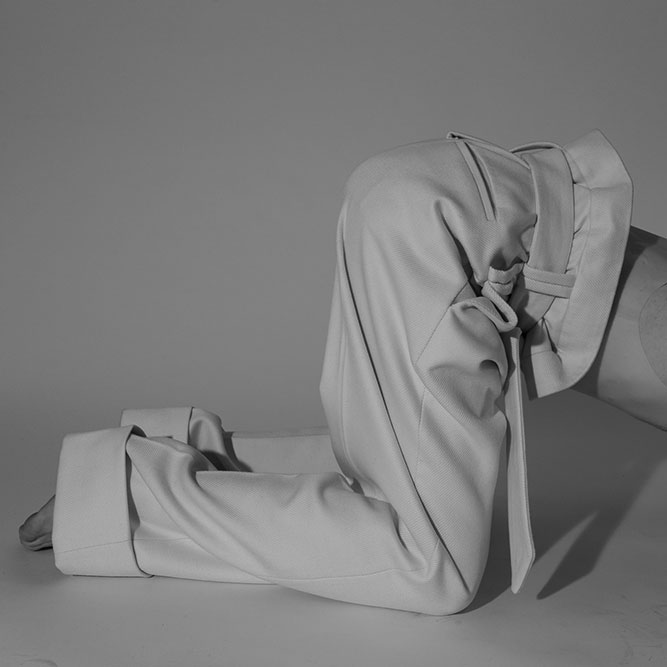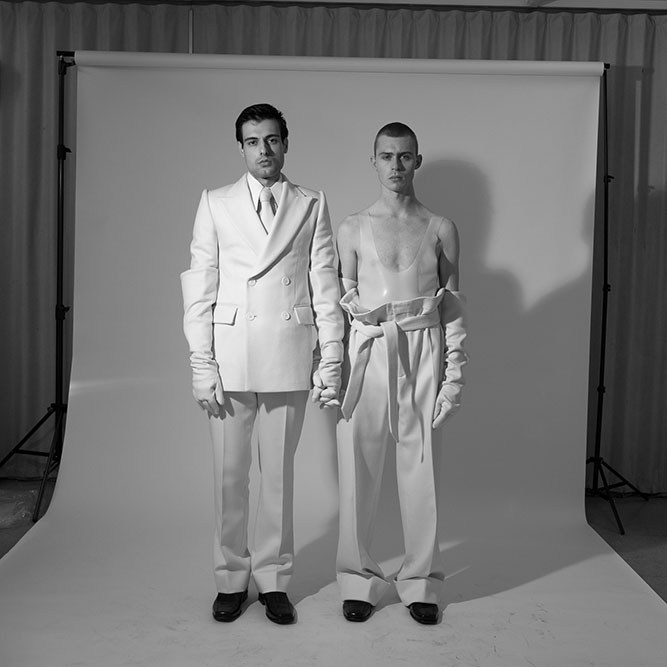Abzal Issabekov — New East 100
For his graduation collection at the world-renowned Central Saint Martins’ MA program in London, Abzal Issabekov went for the look which was both refined and sensual, ambiguous and desirable, cutting-edge contemporary with a hint of forgotten 1970s flamboyance. A skilled tailor, he combined checked black and white material with tight black rubber for an incredibly seductive fresh take on menswear, and it’s won him high-profile admirers in fashion and beyond. Garments from the collection appeared in magazines like Re-edition, King Kong, and Vogue. They’ve been shot by Mario Testino for V Magazine, and recently, the avant-pop sensation Perfume Genius wore leather trousers designed by Issabekov on the cover of his latest album No Shape.
Now working as a ready-to-wear designer at Celine, a dream position for any young designer, Issabekov arrived to the industry from a rather unlikely place. Born in a small town in Northern Kazakhstan, he learnt the basics of his craft from his mother who was a trained seamstress during the Soviet years. At just 27, with design degrees from Parsons School of Design in New York and Central Saint Martins in London, and a place at a fashion house which revolutionised contemporary womenswear, Issabekov is a fascinating example that today, there are no distances too far nor places too remote for true talent.
How did you get into fashion to start with?
My mother used to be a seamstress in Kazakhstan during Soviet times. She lost her job after the Soviet Union collapsed, but when I was growing up I always knew how to sew. Back then it was like a chore, I didn’t really like it. Later I got my first degree in business and accounting. I was sewing all my life but only when I started doing my business degree did I realise that making clothes is what I really like. I applied to Parsons in New York and got in, got a scholarship and moved to New York. Later I decided to apply for a fashion MA at Central Saint Martins because of the course director Louise Wilson, and that’s how I ended up London.
“What really pushed me to do things is the internet. My generation was one of the first to experience it, finding out that you’re not on your own”
It’s very interesting that you learned to sew in an environment so far from the fashion world — was it hard to translate it into a professional career?
The first years of independence in the 90s in Kazakhstan were quite rough, and when I was a teenager you would never consider fashion as a real profession or a way to make money — it was more like a hobby. I grew up in a small town called Pavlodar, and it’s after moving to a bigger city, Almaty, that I started meeting like-minded people. Bigger cities always help. When you’re from a small town you always want to get out.
Your example is very inspiring for young people who also grow up far from fashion capitals. Do you think because of new technologies there’s going to be more talent coming from seemingly remote locations?
What really pushed me to do things is the internet. My generation was one of the first to experience it, finding out that you’re not on your own, that there are so many other people like you out there. When you see examples, read articles of these great designers and other creative people achieving things, it’s very stimulating. Also it’s not like you need to buy a magazine, search for it, wait for months — everything is available instantly, you just need to learn how to research it.
It’s interesting that you also referenced technology in the presentation of your MA collection which you did over WhatsApp. How did this idea appear?
It was a collaboration with art director Philipp Humm — he approached me as he was very into the collection. The whole nature of the collection is the various definitions of queerness: both the 70s chic style and the way people, and especially gay men, meet nowadays through all kinds of apps and platforms. We thought “let’s see what happens if you post a number on Dazed” — and so many people texted! The funniest part is that you don’t know who you’re texting and you don’t know what you’re going to get. Replying to the strangers’ messages we’d send some pictures of the collection mimicking the way people talk on dating apps.
“I was going for queerness, but queerness that has intelligence to it”
Which other ideas did you explore in the collection, apart from queerness?
I was working with tailoring from different eras, but then I was also going to Berlin a lot and in Berghain I met many designers who work for sartorial companies and who have amazing styles. They would make a suit in rubber and wear amazing kinky outfits. It blended with my research on 70s tailoring and people like Walter Albini, Jacques De Bascher, Karl Lagerfeld: they were socialites and would always wear these amazing dandy suits but at the same time they were so into that gay fetish world and at night they would go to these crazy gay parties because the 70s were very hedonistic times. I really wanted this collection to be about hedonism. I also researched Robert Mapplethorpe’s photography, history of Berlin’s fetish scene of Berlin, Peter Hujar and queer semiotics.
What was the main challenge of working with these topics for you?
I was going for queerness, but queerness that has intelligence to it, not sleaziness. I wanted to have this very refined touch. Because even if you want to make a rubber top you have to know of a certain thickness and a certain fit. It is like tailoring but in a different way, the way it’s going to breathe or not breathe, how tight should it be — you don’t want it to be loose on anyone, you want it to almost be like your second skin. Same as the perfect suit which is like a second skin.
“The thing is, there is no key to success — if somebody had this key everyone would be successful”
Would you ever consider starting your own label?
I am currently at Celine and really enjoy working there. I think everyone on my Central Saint Martins MA were considering starting their own label because the MA is such a big platform. I decided that I’d maybe postpone it for now, but later I would like to do something on my own.
In your opinion, what’s the main thing an upcoming designer should remember in order to achieve something in the industry?
I’m still figuring it out myself, and I still don’t know what’s going to happen in a year or two. The thing is, there is no key to success — if somebody had this key everyone would be successful. At the end of the day it’s always about hard work because lazy people don’t get anywhere.
Text: Anastasiia Fedorova
